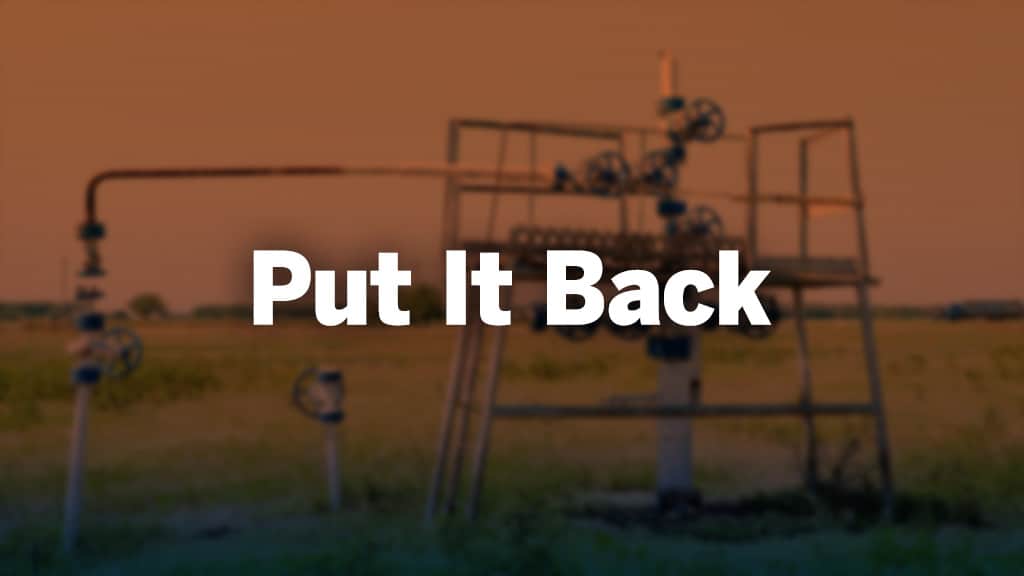The Put it Back Course consists of several lessons to help you explore carbon capture, utilization, and storage technology. The National Academy of Engineering recruited an international group of leading technological thinkers and asked them to identify the Grand Challenges for Engineering in the 21st century. One of their 14 game-changing goals for improving life on the planet is Develop Carbon Sequestration Methods. In this course you will have an opportunity to take an excursion through the rationale, history, current research, and technology of this grand challenge. You can even take on the challenge of designing a carbon storage project yourself!
In this course you will look at patterns of energy used globally and locally and gain insight on the main producers of various energy resources, globally, in the United States, and specifically in Texas. You will also explore patterns of emissions across the globe and specifically in Texas. The course presents various sources of CO2 emissions and the technologies for capturing, utilizing, and storing this greenhouse gas, with particular examples of projects in Texas. You will learn about CO2 enhanced oil recovery, its impact on the longevity of an oil and gas field, and the technology’s ability to contribute to negative carbon emissions as part of a carbon capture, utilization and storage project.
You will explore the collaborative contributions of the scientific community to establishing wells specifically for the injection of CO2, as well as the safeguards in place for protecting groundwater, health and safety. You will apply your newfound knowledge by designing a project for storing CO2 captured at the Fayeteville Power Plant in Texas. The course highlights the various technologies that allow scientists and engineers to monitor carbon storage projects and ensure they protect underground sources of drinking water and public health and safety. You will explore a storage project case study where a team of scientists used an innovative monitoring tool to investigate concerns of a family that CO2 might be leaking on their farm. Finally, you will explore the global role of carbon capture and storage technology, the impact of cost and policy support on deployment, and the ability to integrate projects with renewables.
Earth and Space Science
Earth Systems Science
Environmental Systems
Engineering Science
Principles of Applied Engineering
Chemistry
Physics
Integrated Physics and Chemistry
Foundations of Energy
Oil and Gas Production I
Oil and Gas Production II
Oil and Gas Production IV
Petrochemical Safety, Health & Environment
Earth and Space Sciences
Engineering, Technology, and Applications of Science
Life Sciences
Physical Science
Lessons
CO₂ Emissions
This lesson explores emissions of carbon dioxide (CO2) at local, regional and global scales. Specific connections of the lesson include energy consumption, especially for industrial use, transportation, and power generation.
Energy Consumption
This lesson explores primary and secondary energy consumption at local, regional and global scales. Trends in energy consumption between various nations as a result of industrialization and population growth are presented for comparison.
Reducing Emissions
This lesson explores the various sources of carbon dioxide (CO2)emissions and the technologies for capturing, utilizing and storing this greenhouse gas.
CO₂ Enhanced Oil Recovery
This lesson explores CO2 enhanced oil recovery, its impact on the longevity of an oil and gas field and the technology’s ability to contribute to negative carbon emissions as part of a carbon capture, utilization and storage project.
Class VI Wells
This lesson explores the international application of carbon-dioxide injection technology specifically for carbon storage, and the contributions from the United State government and the Texas Bureau of Economic Geology.
Keeping an Eye on Injected CO₂
This lesson examines a number of tools for monitoring a carbon storage project, including atmospheric, near-surface and subsurface techniques.
Monitoring Case Study
This lesson examines a case study of a carbon capture utilization and storage project in Canada, specifically looking at a monitoring program designed to respond to a landowners complaint about potential leakage of CO2 on their property.
